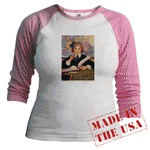| Introduction | Annotated Tales | eBooks | Bookstore | Illustration Gallery | Discussion Board | Blog |
 |
|
Full-Text Fiction The
Seven Wives of Bluebeard Bluebeard's
Ghost Bluebeard:
A Musical Fantasy Full-Text Poems How
the Helpmate of Blue-Beard Made Free with a Door Bluebeard Blue-Beard's
Closet Untitled
[Bluebeard] Bluebeard
|
The story of Bluebeard and its themes have appeared in literature and other forms of art. This page provides a small discussion of some of the better known treatments by authors and other artists. Literature Poetry Music Film Theatre Atwood, Margaret. The Robber Bride. New
York: Nan A. Talese, 1993. NOVEL: "This is the wise, unsettling, drastic story of three women whose lives share a common wound: Zenia, a woman they first met as university students in the sixties. Zenia is smart and beautiful, by turns manipulative, vulnerable – and irresistible. She has entered into their separate lives to ensnare their sympathy, betray their trust, and exploit their weaknesses. Now Zenia, thought dead, has suddenly reappeared. In this richly layered narrative, Atwood skilfully evokes the decades of the past as she retraces three women’s lives, until we are back in the present – where it’s yet to be discovered whether Zenia’s “pure, free-wheeling malevolence” can still wreak havoc. The Robber Bride reports from the farthest reaches of the sex wars and is one of Margaret Atwood’s most intricate and subversive novels yet." Benson, Anne. Thief of Souls. New York:
Delacorte, 2002. NOVEL: A suspenseful novel incorporating the stories of Gilles de Rais and Bluebeard. |
|
| ©Heidi
Anne Heiner, SurLaLune Fairy Tales E-mail: heidi@surlalunefairytales.com Page created 12/1998; Last updated 7/25/2013 www.surlalunefairytales.com |













































